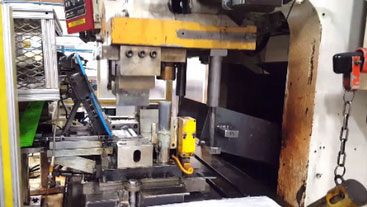At Vulcan Industries Corporation, years of experience with troubleshooting manufacturing processes gives us the unique ability to improve quality and control costs. The following case study demonstrates how we helped a customer minimize recurring defects from our tubing supplier.
Project Overview
• Industry: Motorcycle
• Processes: Tubing manufacturing, cutoff, forming, polishing, and plating
• Company Background: Vulcan project
• Challenge: During the production of push rod covers, defect rates after chrome plating had increased significantly due to faults in the material that were not removed during the polishing process. These defects showed up on an annual basis for approximately 5 months, and would drop off for around 7 months.
• Assessment: Sample parts were sent to an independent laboratory for analysis of the defective material. A problem in the manufacturing process was the source for deep pitting in a straight line down the length of the tube. A further review of the process determined that the defects could be originating from the annealing operation.
The Vulcan Solution – Identifying and Correcting Annealing Furnace Defects
Plymouth Tube, our tube supplier, contacted an annealing furnace consultant to determine if the defects could be attributed to the annealing operation. The consultant identified 2 annealing furnace areas that contributed to this specific defect.
1.- The openings at either end of the annealing furnace were greater than required, thus allowing the atmospheric gas to escape.
2.- A fan for the operator was placed near the inlet side of the furnace, allowing contaminated air to enter the atmospherically-controlled furnace. Contamination from the furnace rollers could be imbedded into the wall of the tubing creating a straight line of defects. Coincidentally, the furnace maintenance and cleaning occurred annually, coinciding with a dramatic decrease in defects.
The openings at the ends of the furnace were reduced to minimize the atmospheric gas from escaping the furnace. The fan was removed from the area to prevent contamination of the furnace atmosphere. Rollers were cleaned by running a large plate of steel through the furnace prior to annealing our tubing.
The Final Result – Defect Rates were Reduced from 12% to 0.5%
The improvements have had a positive impact on all of Plymouths’ annealed tubes. Defect rates were reduced from a high of 12% to the current rate of 0.5%.
At Vulcan Industries, we are experts at identifying and resolving manufacturing inefficiencies. Contact us today to find out how we can help with your motorcycle manufacturing solutions.


